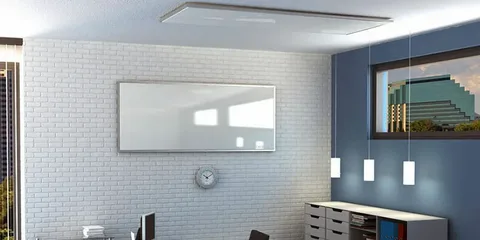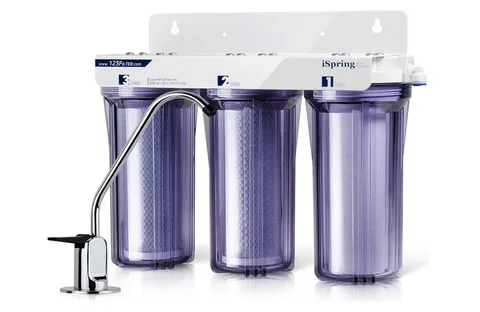As the chill of winter sets in and temperatures drop, finding an efficient and effective heating solution becomes a top priority for homeowners. Enter infrared panels—a revolutionary technology that not only promises warmth but also offers many benefits that traditional heating methods simply can’t match. Imagine stepping into a cozy room where you feel enveloped by gentle, radiant heat, all while reducing your energy bills and minimizing your carbon footprint. Sounds enticing, right? In this comprehensive guide, we’ll explore how infrared heating panels work, their numerous advantages over conventional systems, and why they might just be the best investment for your home’s comfort and efficiency.
Introduction to Infrared Heating Panels
As winter settles in and temperatures drop, the quest for a cozy home becomes paramount. You might be familiar with traditional heating systems like radiators or forced air units, but have you heard about infrared heating panels? These innovative devices are gaining popularity for providing warmth more efficiently and comfortably.
Imagine entering a room that feels warm from entering—not just because the air is heated, but because your body absorbs gentle radiant heat directly. Infrared heating panels offer this unique experience while boasting numerous benefits that can enhance your living space.
Are you curious about how they work and what advantages they offer? Let’s dive deeper into the fascinating world of infrared heating technology!
How do Infrared Heating Panels Work?
Infrared heating panels operate on a simple yet effective principle. They emit infrared radiation, a heat that warms objects directly rather than the air around them. This process mimics the natural warmth of the sun. When you switch on an infrared panel, it generates radiant heat that travels through space. As this invisible energy reaches surfaces—walls, furniture, or even people—it begins to warm them up instantly.
Unlike traditional heaters, which rely on convection and can take time to circulate warm air, infrared systems provide immediate comfort. The result? a cozy environment without wasting energy warming unoccupied spaces. These panels are also efficient because they require less energy to maintain comfortable temperatures than conventional heating methods. Thus, you may find yourself enjoying lower utility bills while staying perfectly warm during chilly months.
Benefits of Infrared Heating Panels:
Infrared heating panels offer a range of benefits that make them increasingly popular in modern homes. One major advantage is energy efficiency. These panels use less energy than conventional systems, helping you save on utility bills while reducing your carbon footprint.
Health enthusiasts appreciate the wellness advantages, too. Infrared heat penetrates deep into the skin, promoting relaxation and easing muscle tension. This can be especially beneficial for those with chronic pain or arthritis.
Another bonus is improved air quality. Unlike traditional heaters, which circulate dust and allergens, infrared panels warm objects directly without stirring up particles, creating a cleaner environment for everyone.
Lastly, their sleek design adds a contemporary touch to any room. Available in various styles and colours, these panels seamlessly blend with your decor while providing effective warmth whenever needed.
– Energy Efficiency
Energy efficiency is one of the standout features of infrared heating panels. Unlike traditional systems that heat the air, these panels warm objects and people directly. This method reduces energy waste significantly. Because they operate at lower temperatures, infrared panels consume less electricity or gas than conventional heaters. Users often notice a reduction in their utility bills over time. These panels also offer quick warmth without lengthy preheating periods. You can feel comfortable almost instantly once you turn them on.
Additionally, many models come with programmable settings and smart technology features. This allows for more precise control over your heating needs, adapting to your schedule seamlessly. Choosing an infrared panel means investing in sustainable comfort while minimizing environmental impact—an efficient choice for your home and wallet.
– Health Benefits
Infrared heating panels offer a range of health benefits that set them apart from traditional heating methods. They provide consistent warmth, which can be particularly soothing for individuals with chronic pain or arthritis. The gentle heat penetrates the skin to relieve muscle tension and improve circulation. This type of heating also aids in reducing respiratory issues. Unlike conventional systems, infrared panels do not circulate dust or allergens throughout the space. This creates a cleaner atmosphere, making breathing easier for those with asthma or allergies.
Some studies suggest that infrared therapy may promote detoxification by inducing sweating without overheating the body. This natural process helps eliminate toxins while providing relaxation and stress relief. Using infrared heating panels can contribute positively to overall well-being while maintaining an inviting home environment.
– Improved Air Quality
Infrared heating panels offer significant advantages when it comes to indoor air quality. Traditional heating methods often circulate dust, allergens, and other particles throughout a space. This can lead to discomfort and health issues for sensitive individuals. Unlike conventional systems, infrared panels heat objects directly rather than warming the air. This process minimizes air movement and reduces the spread of pollutants in your home. As a result, you may notice fewer respiratory irritations or allergy symptoms.
Additionally, many infrared models do not require ducts or vents that can trap dust over time. With less accumulation of airborne contaminants, you create a cleaner living environment. Many homeowners appreciate this benefit as it promotes overall well-being and comfort. By improving air quality through effective heating methods, infrared panels contribute positively to your home’s health and lifestyle choices.
– Design and Aesthetics
Infrared heating panels blend functionality with style. These sleek devices come in various designs to match any interior decor. Unlike traditional radiators, they can be mounted on walls or ceilings, freeing up valuable floor space. A wide range of colours and finishes allows homeowners to choose panels that complement their existing furnishings. Some models even feature artistic prints, turning a necessary appliance into a decorative element.
The minimalist appearance of infrared panels adds elegance to modern spaces. They seamlessly integrate into homes without disrupting the overall aesthetic. Moreover, the ability to position them strategically enhances both comfort and ambience. Whether you prefer contemporary chic or classic charm, there’s an infrared heating panel that fits perfectly within your vision for home design.
Comparison with Traditional Heating Methods
Traditional heating methods, like forced air systems or radiators, often struggle with inefficiency. They first rely on heating the air in a room, leading to cold spots and uneven temperatures. Infrared panels operate differently. Instead of warming the air, they directly heat objects and people in a space, resulting in immediate warmth without energy waste. Additionally, traditional systems can circulate dust and allergens around your home. Infrared heating minimizes this issue by not disturbing the air as much, promoting cleaner environments.
The installation process also differs significantly. Traditional units may require ductwork or bulky radiators that occupy precious living space. In contrast, sleek infrared panels blend seamlessly into walls or ceilings without taking up extra room. Cost-wise, while upfront expenses vary for both options, many find that infrared heaters save money over time due to lower operational costs and higher efficiency rates than conventional systems.
Types of Infrared Heating Panels:
Infrared heating panels come in various types, each designed to cater to different needs and preferences. Electric panels are the most common choice for residential spaces. They convert electricity into heat, providing a quick and efficient solution for room warming.
Gas panels are another option but may require more setup due to gas line installations. These can be ideal for larger areas or where electric supply is limited.
Regarding installation styles, wall-mounted panels save space and blend seamlessly with your decor. They’re perfect if you want a permanent heating solution that doesn’t obstruct room layout.
On the other hand, portable infrared heaters offer flexibility. You can move them from one room to another, making them great for those who wish to heat specific areas without a full system overhaul. Each type has its advantages tailored to varied lifestyles and living environments.
– Electric vs. Gas Panels
Consider your specific needs when choosing between electric and gas infrared heating panels. Electric panels are known for their simplicity and ease of installation. They require no venting or additional plumbing, making them a hassle-free option for many homeowners. On the other hand, gas panels can provide rapid heat and may be more cost-effective in certain regions where natural gas prices are lower than electricity rates. They often produce higher temperatures quickly, which is great for large spaces.
– Wall-mounted vs. Portable Panels
Wall-mounted infrared heating panels offer a sleek and permanent solution for home heating. They can be installed in various locations, providing efficient warmth without taking up floor space. This makes them ideal for smaller rooms or areas where furniture arrangement is crucial. On the other hand, portable panels provide flexibility. You can move them around to target specific spaces that need extra heat, such as living rooms during winter gatherings or bedrooms on chilly nights. Their mobility allows you to use them wherever you feel the chill most.
Installation Process and Cost Analysis
Depending on your chosen type, installing infrared heating panels can be straightforward. Wall-mounted panels typically require professional installation to ensure optimal placement and safety, which might involve electrical work and wall reinforcement. Portable panels offer more flexibility, as they simply need to be plugged into an outlet. Just ensure that your electrical system can handle the load without issues.
Cost analysis varies widely based on panel type and installation complexity. On average, electric models range from $200 to $800 per unit. If you hire professionals, installation costs may add another $150 to $300. While initial expenses can seem high, consider long-term savings on energy bills when assessing overall value. Investing in quality panels often leads to better efficiency and durability, too.
Common Myths About Infrared Heating Panels
Many misconceptions surround infrared heating panels. One common myth is that they emit harmful radiation. In reality, the type of radiation produced is far from dangerous; it’s similar to the warmth felt from sunlight, without any UV rays. Another misconception is that these systems are too expensive to operate. While upfront costs can be higher than traditional heaters, their energy efficiency often leads to significant savings on monthly bills.
Some believe infrared panels require constant maintenance. This isn’t true; they typically need little upkeep beyond occasional dusting. Finally, many think these heaters only work well in small spaces. However, with the right sizing and placement, infrared panels can heat larger areas more efficiently than conventional methods.
Maintenance and Safety Tips for Infrared Bathroom Heater
Regular maintenance is essential to keeping your infrared bathroom heater in top shape. Start by dusting the surface gently with a microfiber cloth. This prevents dirt buildup and ensures optimal performance. Check connections periodically to ensure security. Loose wires can lead to inefficiency or even safety hazards. Ensure that there’s adequate space around the panel for airflow. To maintain efficiency and safety, avoid covering them with furniture or drapes.
If you notice any unusual noises or smells, turn off the unit immediately and consult a professional technician. Ignoring these signs can lead to bigger issues later. Consider using surge protectors if your panels are electric for added peace of mind. Protecting against power surges helps prolong their lifespan while ensuring safe operation. Lastly, always follow manufacturer guidelines for specific care instructions tailored to your model’s needs.
Conclusion
When considering the switch to infrared heating panels, it’s essential to weigh your specific needs and preferences. These innovative systems offer numerous advantages that enhance comfort and efficiency in your home or office. Their energy-efficient design shows a notable reduction in heating costs over time. The health benefits are also compelling, particularly for those with respiratory issues or allergies. Improved air quality is a bonus since these panels don’t circulate dust and allergens like traditional heaters often do.
FAQs
1. How do infrared panels work?
Infrared heating panels use electromagnetic radiation to heat objects and surfaces directly in a room rather than heating the air like traditional convection heaters. The panels emit infrared rays absorbed by objects, releasing the heat back into the room. This creates a more efficient and comfortable form of heating.
2. Are infrared heating panels safe?
Yes, infrared heating panels are considered safe for residential and commercial use. They emit low radiation levels similar to the heat produced by our bodies. Additionally, they do not produce harmful gases or fumes like other heaters.
3. What is the difference between far-infrared and near-infrared?
Far-infrared (FIR) refers to longer wavelengths of infrared radiation that can penetrate deeper into objects, making it ideal for heating larger spaces and providing long-lasting warmth. Near-infrared (NIR), on the other hand, has shorter wavelengths that produce more intense heat but cannot penetrate as deeply.




